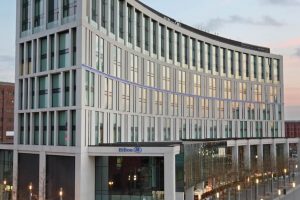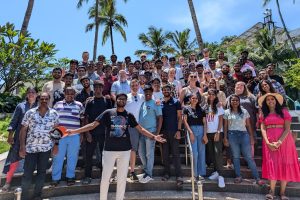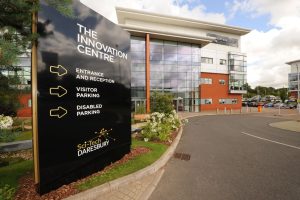Robots could transport huge aircraft wings at Airbus factory
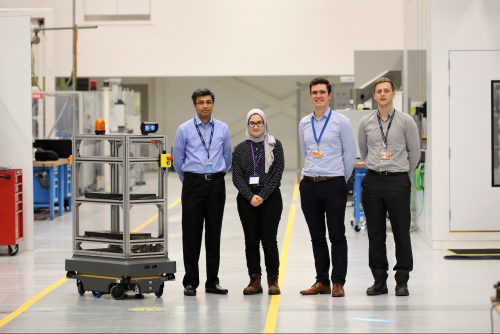
Entire aircraft wing assemblies could be transported by intelligent, autonomous robots at the vast Airbus production facility in Broughton, near Chester, which employs more than 6,000 staff.
This follows a collaborative research project with engineers at the integrated manufacturing group of the University of Sheffield’s Advanced Manufacturing Research Centre (AMRC).
The ambitious project began by developing safe, automated means of delivering tooling supplies within the Airbus factory, but could be expanded rapidly as the benefits of using small, autonomous robotic vehicles are being realised on the shop floor.
Amer Liaqat, technology manager for assembly innovation & development at Airbus UK, said: “This project has been Airbus’ first trial of autonomous mobile robots (AMRs) on the shop floor.
“We have made a number of enhancements to the standard off-the-shelf technology to make it safe and suitable for our factory environment and are now setting benchmark for its roll-out to other Airbus sites worldwide.”
The project was initiated to fulfil Airbus’ vision of automating component handling, which involves a significant amount of manual work due to the sheer size of the components and precision required during aircraft assembly.
“Doing small scale trials with this AMR has given us a good idea of the challenges involved in adapting this technology and the needs for future development work,” added Amer.
AMRC senior project engineer, Dr Lloyd Tinkler, said: “Supervised trials of the robots have already taken place and estimated that utilising them could save the whole time equivalent of one operator per shift in the current use case at Airbus, freeing time for the operators to work on highly-skilled tasks, ultimately improving shop floor productivity.
“This outcome has led to Airbus exploring opportunities where such robots could be used to optimise processes, including specially-adapted versions to pull trolleys with aircraft parts and tooling already in use at the Airbus site.”
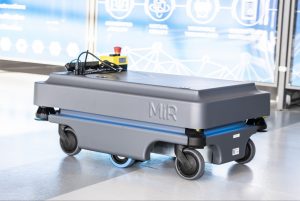
A robot moving around the Airbus site
Amer said: “Developing it further, we could see this technology being utilised to transport an entire aircraft wing between factories on site at Broughton.”
In-built laser scanners map the environment for the robots so they can navigate their surroundings, while flashing lamps and beacons indicate current status and intended direction to anyone nearby.
Lloyd said: “The further developments will enable us to complete a trial of the AMRs unsupervised by humans at the Airbus Broughton site, the aim of which is to validate the estimated time-savings, the number of movements and how many tools the robots are delivering between the engineers per shift.
“This will ensure they are ready to roll out live onto the workshop floor to assist engineers by delivering supplies from a number of locations.”

